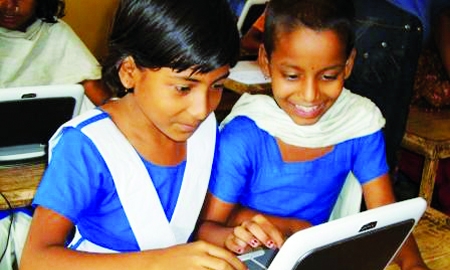Bangladesh’s progress in achieving many of its Millennium Development Goals (MDGs) has been lauded as “remarkable” by the United Nations Development Programme (UNDP). Gains made in areas such as poverty reduction, primary school enrolment and maternal health “could be the foundation for an exceptional performance across all [MDG] indicators by 2015” and Bangladesh’s leading development academics and practitioners claim the country as a “poster-child in terms of MDG progress”.
In a statement in May, UN Secretary-General Ban Ki-moon highlighted the country’s focus on health improvement, especially through partnerships: “I commend Bangladesh on its progress towards all the health MDGs, in particular on child mortality. I urge the International Centre for Diarrhoeal Disease Research, Bangladesh (icddr,b) and the Government of Bangladesh to continue their efforts, share lessons learned and continue to innovate and partner to find sustainable solutions to our most pressing global health challenges. Thank you for being leaders in global health.”
Bangladesh’s poverty rate has dropped from 56.6 per cent in 1992 to 31.5 per cent in 2010 (World Bank). Life expectancy at birth has risen from 61 years in 1993 to 69 in 2011. Also, the under-five mortality rate has been reduced to 46 per 1,000 live births in 2011 from 139 in 1990 (UNICEF). The maternal mortality ratio is on track to drop to 143 deaths per 100,000 live births by 2015, down from 574 in 1991.
The Bangladeshi primary education system is widely regarded as one of the best among developing countries and the country has achieved almost universal gender parity in primary education. The country has also made strides in women’s empowerment and rights protection, from holding higher positions in the military, government and business world to greater attendance in the classroom.
Dr Dipu Moni, Minister of Foreign Affairs, commends Prime Minister Sheikh Hasina for putting the right policies in place to give women rights and create greater opportunities for them, while also creating social safety net and cash transfer programmes for all people at risk. “Investing in education, especially girls’ education, has a sort of chain effect,” says Dr Moni. “Violence diminishes, the girl marries at a later age, and child and maternal mortality rates go down. It is a chain of events that happens through investment in girls and in education as a whole.”

1 COMMENT
I was very happy to read that one of the most important reasons for the country's progress has been investment in education of health and education for women.